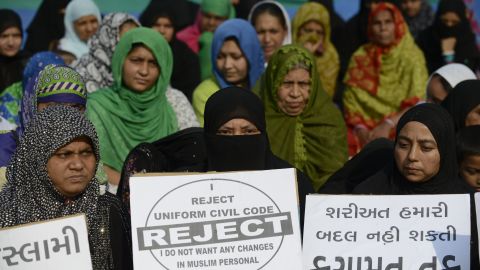
The relationship between divorce nonacceptance and initial levels of conflict was strongest for divorced fathers, whose relationship with their ex-partner’s acceptance of the divorce was particularly strong. According to Emery and colleagues, this relationship might be a reflection of attachment-related protests during divorce. Although more research is needed to establish whether this association exists, the present data suggest that it does.
In India
In India, a slew of divorce protest data is being published on the internet. These reports track the number of women filing for divorce and how many people are actually being granted divorces. This is an important issue, because divorce rates in India are soaring. Fortunately, the situation is improving. In 2007, nearly 70 percent of women were granted divorces. But the rates haven’t risen to the same high level as they were in the 1970s. This is largely due to the emergence of public messages about child marriage and education.
The data comes from a variety of sources, including the Crime Records Bureau and various state courts. According to the report, divorce rates in Kerala increased 350 per cent in the last decade, while divorce rates in Punjab and Haryana increased 150 per cent. The state with the highest number of divorces, Kerala, is the most literate, with a large number of Gulf-funded migrants. While earlier divorces were only practiced by the affluent upper classes, the rise of divorce cases in the state suggests that middle class couples have emerged from their shells in order to escape the pains of discordant families.
The results show that many Indians say that religious segregation is an important issue, but the fact is that there are also significant differences between religions. Hindus and Muslims are disproportionately religiously divided and strongly opposed to interreligious marriage.
Friedman refused to sign a divorce decree
The Orthodox Jew Bob Friedman refused to sign a divorce decree for his wife Tamar Epstein after a civil court ruling. While Friedman was angry with the court ruling, he did not want to give up major custody of their 3-year-old daughter. In response, hundreds of Jewish protesters gathered outside his Silver Spring apartment on Dec. 19. A prominent rabbinical court condemned his intransigence.
In addition, Friedman requested that Aytes not take their daughter to Turkey. While Aytes is a Turkish citizen with a permanent U.S. green card, he could easily get a job in Istanbul. Friedman also claimed that Aytes had been hostile to his wife. He also accused Friedman of denying him visitation time.
However, Friedman’s refusal to sign the divorce decree is a good sign that his marriage did not work out. He is a public servant who wants to stay on Capitol Hill. He does not want a Google trail of accusations that he is a bad Jew or emotionally abusive. So he argued that he should be awarded the marital property, not his ex-wife.
David filed a motion to show cause and motion for attorney’s fees, and David tried to enforce the divorce decree through contempt. However, Abbie believed she had a full defense to David’s allegations and filed a motion for summary judgment under the NRCP 56 standard. Abbie also filed a motion for summary judgment, which asked the district court to dismiss or strike all allegations regarding the cushion account.
Friedman refused to sign a divorce decree in the United States
Aharon Friedman, a Harvard Law School graduate and Orthodox Jew, has refused to sign a divorce decree for his wife Tamar Epstein. The rabbi’s refusal to sign the divorce decree leaves his wife chained to his wife and prevents her from remarriage within Orthodox Judaism. The decision has prompted protests from hundreds of people who hope Friedman will reverse his decision.
The parties’ divorce decree was entered by the Clark County district court on March 26, 2009. On March 23, 2009, the Clark County district court entered two orders related to the stipulations. One of these orders amended the Settlement Outline. The other order incorporated the amended Settlement Outline into the divorce decree.
The Friedmans were married in December 1974. At the time of the divorce, both parties owned individual assets between $10,000 and $20,000 and jointly owned a municipal bond portfolio worth $2.9 million. The jury awarded Kathryn half of the marital assets, but Lester retained half of the municipal bond portfolio.
After a three-day evidentiary hearing on David’s first motion, the court found that Abbie had breached the divorce decree only in one specific instance, which was opening a home equity line of credit in both names. Therefore, it found that a contempt finding against Abbie was inappropriate. Abbie was awarded $200,000 in attorney’s fees, and David was awarded $50,000.
